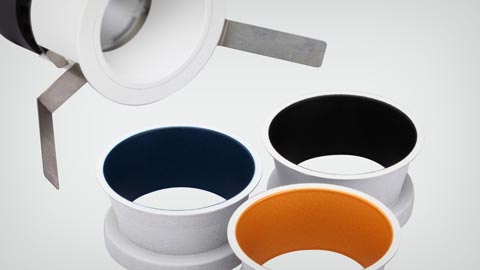Transition to 3D CAD software with built-in core technologies
Transition to 3D CAD software with built-in core technologies

Case Study
Designer lighting products specialist uses Solid Edge and CAM Express to save time and enhance products
Macron
Siemens Digital Industries Software solutions enable Macron to meet the requirements of its mid- and high-end customers
Focusing on the mid- to high-end market
With more than 30 years of engagement in the research and development (R&D) of the architecture of light, Macron Associate Co. (Macron) is currently specializing in light-emitting diodes (LED) lighting. The company has a turnkey supply chain covering everything from drivers, assemblies, mechanisms and electronic components to lighting product design. Macron’s long-time core business is focused on original equipment manufacturers (OEMs) and original design manufacturers (ODMs), with the main customer base in North America. Macron focuses on architectural lighting for the high-end retailer/shop, especially providing custom-tailored products and services to meet the requirements of lighting firms and designers. For LED products to appeal to professional lighting designers, elegant appearance and performance are equally important. To this end, the company not only pays great attention to high-heat dissipation performance and transparency, but also focuses on styling variations of the lighting products, aiming to inspire designer creativity, and create special spatial atmospheres with unique lighting effects.
As Macron focuses on low-volume, highly varied designs, Macron’s R&D department employed 3D design tools early-on. However, in 2013, the company made yet another major switch, turning to Solid Edge® software to engrave and manufacture samples in combination with CAM Express software.
Transitioning to 3D software
Prior to the transition, Macron’s R&D designers were experienced with other 3D design tools, but they made the change due to long-term investment considerations. Hsiao Wei-chin, assistant , manager of the information department at Macron, explains, “What really attracts us is the independent core technology embedded in Solid Edge, which enables us to keep up with technology advancements and guarantee investment returns for users. Although an easy-to-use interface is appealing to users, it’s not easy to stay current if the software’s core technology is proprietary, which can lead to problems and thus cause us to fall behind in our work.”
As 3D design tools represent an essential investment, Macron is determined to be proactive going forward.
Leveraging two types of modeling
Szu-Min, assistant manager of the R&D department at Macron, noted, “Unlike machinery, the design of lighting products does not involve too many parts, so 3D software is mainly used to make drawings, and not much analysis work is involved.”
Therefore, the combination of sequence modeling and non-parametric modeling of Solid Edge can go a long way toward helping Macron meet its goals.
In addition, Siemens Digital Industries Software’s Solid Edge features synchronous technology. For instance, after designers choose the boundaries of a part, the system is used to check whether there is any geometric correlation between the boundaries of the part and other boundaries, and calculate the necessary geometric correlation that must be maintained. This is also known as non- parametric modeling as it doesn’t require a manual parametric setting.
“Before introducing Solid Edge, our engineers had already been used to sequential modeling, so it surely is a good thing that they can do two kinds of modeling with this software,” says Chen. ”By providing both sequence modeling and non-parametric modeling, Solid Edge cuts down the time needed to modify moderately complex drawings by half or even more compared to our previous system.”
